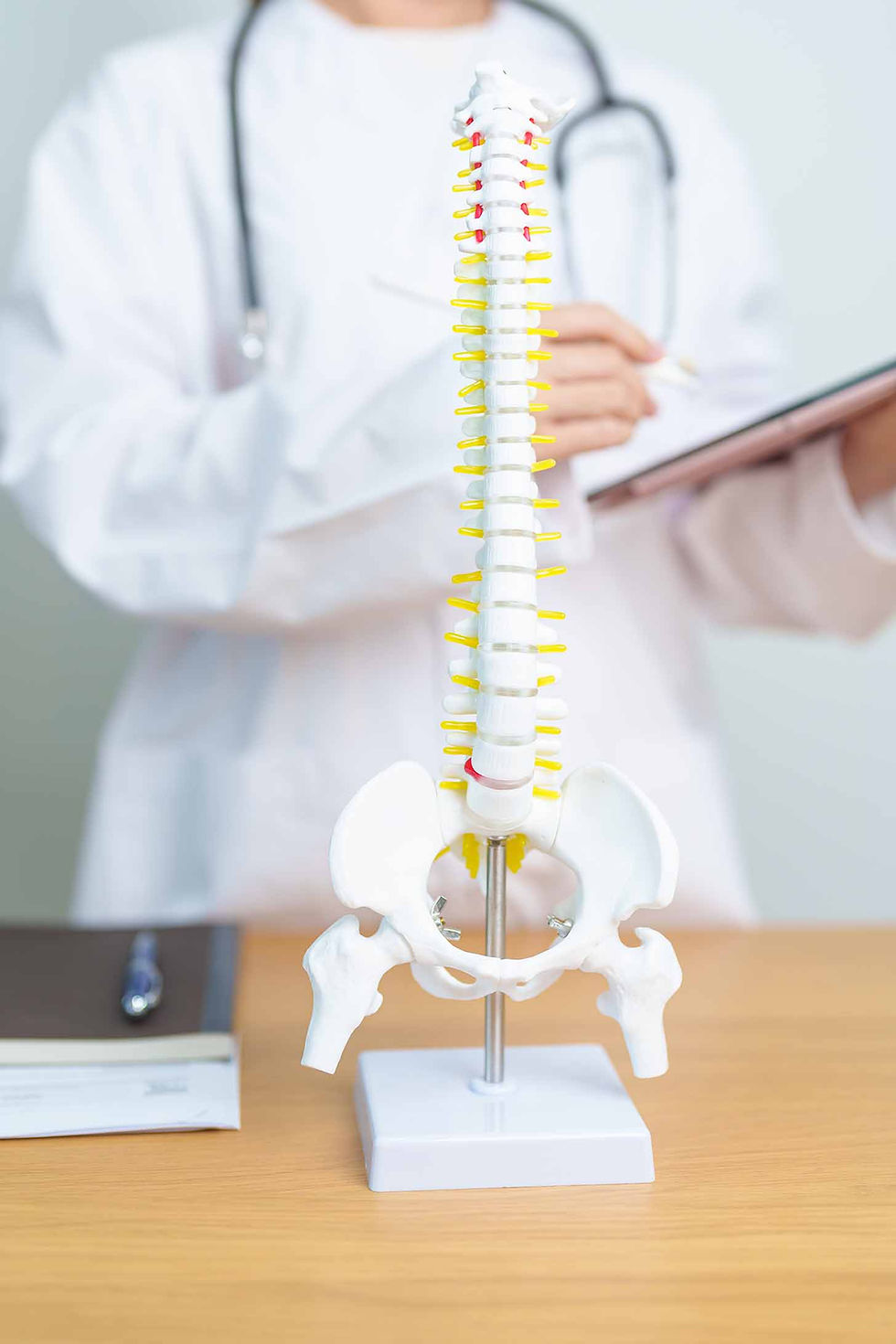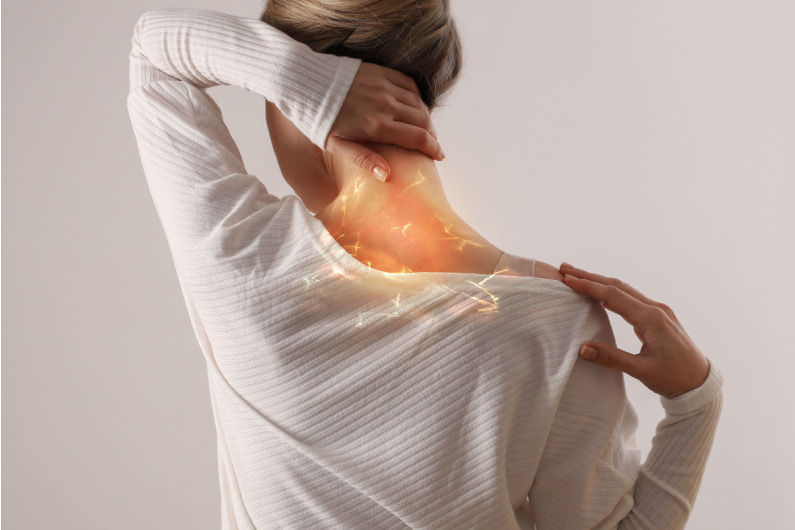

Treatment for myelopathy
First of all, it is important to ascertain whether your symptoms are caused by myelopathy and not something else. Dr. Baig will use imaging and electrodiagnostic tests in conjunction with a thorough physical examination to rule out less serious conditions that could be causing your symptoms. While we never want to frighten patients, myelopathy will only worsen over time. It is important to get treatment early on.
Mild myelopathy may be treated with medication, bracing and physiotherapy. These treatments can help deal with pain and increase mobility, but they do not treat the root cause of the problem– tissue pressing against the spinal nerves.
In most cases of myelopathy, surgery will eventually be required. Depending on which structures are pressing against the nerves, Dr. Baig will use the appropriate decompression surgery to remove the encroaching tissue and create space in the spinal canal.
The most common surgery for myelopathy is laminectomy. Dr. Baig is skilled and experienced in the most advanced and least invasive forms of decompression and spinal fusion surgery available, and will only perform surgery if he’s fully confident it will bring relief. Patients can be cared for at any of our spine treatment centers in Phoenix.

Types of myelopathy
Since myelopathy can occur anywhere in the spine, there are different types of myelopathy named for where it forms.
In the neck, it’s known as cervical myelopathy, which is also the most common form of myelopathy. Symptoms include neck pain, though not all patients that have cervical myelopathy will necessarily experience neck pain.
Another form of myelopathy is known as thoracic myelopathy, which is myelopathy that occurs in the middle of the spine. Commonly caused by herniated discs, spinal trauma or bone spurs, thoracic myelopathy sees an unnatural compression of the spinal cord and associated pain, stiffness or restricted movement.
The third type of myelopathy is lumbar myelopathy, a rare condition where the spinal cord sits low enough to be affected by the lumbar spine.


Causes of myelopathy
A number of changes in the spine can create compression of the spinal cord, especially when they are left untreated for a long time. Bulging or herniated discs, bone spurs (Osteophytes), spinal trauma, spinal arthritis (spondylosis), tumors or other abnormal growths are common causes of myelopathy.
Congenital deformities, inflammatory diseases and diabetes can also cause myelopathy, as can spinal infection, radiation therapy or neurological disorders.
_PNG.png)

Diagnosing myelopathy
While Phoenix-based patients may desire cervical spinal cord compression treatment, it’s important to get a good diagnosis before moving forward. Unfortunately, symptoms of myelopathy are common in other conditions, which means that you’ll need an accurate diagnosis before you can receive treatment for a compressed spine in Phoenix.
It usually starts with an X-ray to rule out other problems, progressing to an MRI to create a detailed visualization of the spine and spinal canal. The MRI can help show areas of stenosis, though a more advanced X-ray known as a myelography utilizes a contrast material to reveal any abnormalities with the spinal cord. For those who can’t receive an MRI, the myelography is the next best thing.
Other electrical tests may also be conducted, including an electromyogram or somatosensory evoked potentials, which can help show the function of the nerves and movement in your arms and legs. By stimulating your extremities, the test monitors how the information travels to the brain via the spinal cord.
If you have another related condition, your treatment for spinal cord compression at our Phoenix-based practice may be part of other similar treatments, such as the treatment of cervical stenosis with myelopathy. Sometimes, myelopathy can be a complication related to another disorder, such as when the spinal cord is damaged due to diabetes, which may affect your myelopathy treatment options. In these cases, it’s important to discuss your options with your Arizona-based spinal cord compression doctor.

Get maximum relief with minimal risk

MINIMALLY INVASIVE
SPINE PROCEDURES
ENDOSCOPIC
SPINE SURGERY
STEREOTACTIC
SPINE PROCEDURES
NON-SURGICAL
TREATMENT OPTIONS

WE DIAGNOSE THE ROOT
Chronic back pain can be debilitating and leave you feeling hopeless. When Craig wasn’t getting the care he felt he deserved, he reached out to Dr. Baig to get the help he needed.
Unfortunately, this is a common problem: People suffering from back pain see a doctor, get diagnosed with some type of “chronic” condition, obtain a prescription and perhaps go to a few physical therapy appointments. They feel a bit better for a time, but the root of the problem is never diagnosed or properly treated. This is how back pain can become chronic, and this is why people ultimately seek the help of Desert Spine and Scoliosis center, expert back surgeons in Phoenix.
Dr. Baig, one of the most respected back surgeons in Phoenix, helped Craig identify his problem by relying on his years of expertise as a spine specialist in Phoenix. With the proper treatment, Craig’s condition improved and he was able to get back into life without the terrible pain that had dragged him down for so long. This is what patients should reasonably expect from our team of Phoenix spine surgeons.
SUCCESS STORIES
For an active 39 year old who participates in Jiujitsu, having a spinal fusion would not have been the right thing for her. We were able to get her back on the mat after a successful disc replacement and she is back living her life
NO MORE BACK PAIN!
For an active young mom, having a spinal fusion was out of the question.
She was back in the gym THE SAME DAY after she had an Endoscopic Decompression. Dr. Baig and is living life
PAIN FREE!
This personal trainer got a cervical disc replacement.
She was able to avoid a fusion, keep her her range of motion, and get back
into the gym
PAIN FREE!

WHAT OUR PATIENTS SAY
We wanted to take a moment to express our heartfelt gratitude to our patients who take the time to leave a review about their experience at our practice.
Your kind words and feedback are greatly appreciated by our entire team, and your review helps other patients make an informed decision about where to turn to for care.
Thanks again for sharing your experience with others. You are making a difference.
T.M. ~ Actual Patient
"Dr Baig and his team are phenomenal. I had a compressed nerve due to a bulging disc and was able to be seen relatively quickly. Surgery was quick and flawless and I have no complaints at all. I truly appreciated how fast they worked to get me seen and out of all the pain I was in! Highly recommend them."
A.H. ~ Actual Patient
"Dr Baig literally changed my life for the better. I had a severely pinched nerve in my neck and needed to get surgery. Immediately at my first consult I felt comfortable and in good hands. I even walked away with a smile on my face during that scary time.
Surgery day couldn’t have gone better. The team he had also had a great bedside manner and helped keep me calm.
After the surgery and in the recovery room, he came in and checked on me and made sure I was all good before releasing me."
S.D. ~ Actual Patient
"Dr Baig was going to be my second opinion for an upcoming scheduled spinal surgery. After my appointment, he will be my surgeon. He gave me a lot of information that was lacking from my other doctors. I felt very comfortable with Dr Baig and his entire office staff. Looking forward to living pain free after we strengthen my bones. It’s going to be a permanent fix and not a bandaid."
Consult Our Back Surgeons in Phoenix
Back pain can often be a result of an accident, injury, or congenital conditions such as scoliosis. Certain forms of back pain can be a result of the natural aging process, including conditions such as disc protrusion and spinal stenosis.
Today, advancements in imaging, and non surgical techniques have led to more treatment options than ever before, allowing us to return our patients the life they once knew…usually without the need for invasive spine surgery.
Typically, back surgeons in Phoenix offer one type of help, even though there are many others available. When you work with Dr. Baig at the Desert Spine and Scoliosis Center, you can rest assured that everything is on the table when it comes to potential treatments that are accepted by the medical world.
CONTACT US
LOCATIONS
Conservative care you can trust, with multiple locations in the valley!
Just how ‘minimal’ is minimally invasive spine surgery?
Book your appointment today and we'll be happy to educate you!
As a top-rated spine specialist, Dr. Baig understands that this complicated part of the body can lead to many different problems, and each possibility will be considered before deciding on a treatment protocol.
Get answers, get help, get back to a better quality of life––schedule an appointment today.

Symptoms of myelopathy
Myelopathy is typically a symptom of a spinal condition such as stenosis, spondylosis, or a herniated disc. The most common form of myelopathy is known as Cervical Spondylotic Myelopathy. This form of myelopathy occurs in the cervical spine (neck) and is caused by spondylosis (spinal arthritis). Thoracic (upper back) myelopathy is less common, but can cause similar symptoms. Lumbar (lower back) myelopathy is rare.
People with myelopathy may experience:
-
Stiffness or weakness in the legs (the most common symptom)
-
Persistent neck stiffness
-
Aching in the neck, arm and shoulder
-
Numbness and tingling in the hands
-
Weakness/clumsiness in the hands
-
Problems with balance or walking
-
Subtle changes in bowel or bladder function
-
Electric-shock sensation down the spine when the neck is flexed forward
-
Weakness, muscle atrophy and cramping in the lower extremities (lumbar myelopathy)


.png)
Phoenix Cervical Myelopathy Treatment
Cervical Spinal Cord Compression Treatment in Phoenix
Do you have nagging stiffness in your neck? Aching in your neck, arm or shoulder? Weakness or stiffness in the legs? Electric shock-like sensation down your spine when you flex your neck forward? These can be signs of a serious spine condition known as myelopathy.
Myelopathy is compression of the spinal cord. People often confuse it with other spinal conditions such as spinal stenosis or radiculopathy. Spinal stenosis describes the narrowing of the spinal canal (which can lead to myelopathy) and radiculopathy describes irritation of the nerve roots as they leave the spinal cord or cross the intervertebral disc. But myelopathy describes compromise of the spinal cord itself.
Myelopathy can occur in any region of the spine, but is most common in the cervical spine (neck).
_PNG.png)



